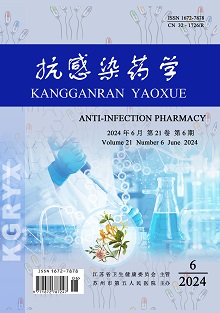WANG Sheng, GENG Li, QU Ming-chao
Objective: To explore the mechanism of action of erigeron breviscapus in treating hypertension using network pharmacology and molecular docking techniques. Methods: The active ingredients of erigeron breviscapus and its targets were searched on the Traditional Chinese Medicine Systems Pharmacology Database and Analysis Platform, and the related protein targets of hypertension were searched in GeneCards, TTD and OMIM databases, and the gene names of the targets were available in the Uniprot and STRING databases. A Venn diagram was drawn to obtain the intersection targets. Then, the "erigeron breviscapus-ingredients-hypertension-targets" network diagram was constructed using the software Cytoscape 3.10.0 to obtain the main compound components, and then the main targets of erigeron breviscapus for the treatment of hypertension were obtained by constructing a protein-protein interactions (PPI) network; the DAVID database was used to perform GO functional enrichment analysis and KEGG pathway enrichment analysis on the intersection targets of drugs and diseases. Finally, molecular docking verification was performed on the main compounds and main targets, and the binding energy was calculated. Results: After screening, 207 targets of erigeron breviscapus, 1 585 hypertension-related targets and 113 intersection targets were obtained; among them, the top 5 components with the highest degree value were quercetin, kaempferol, luteolin, formononetin and baicalein, and the top 5 intersection targets with the highest degree value were transcription factor activator protein 1 (JUN), tumor suppressor gene p53 (TP53), heat shock protein HSP90-α (HSP90AA1), serine/threonine kinase 1 (AKT1), mitogen-activated protein kinase 1 (MAPK1). The GO functional enrichment analysis and KEGG pathway enrichment analysis showed that the reactive oxygen species signaling pathway, PI3K-Akt, tumor necrosis factor (TNF) signaling pathway, etc. were the main pathways of erigeron breviscapus in treating hypertension. The molecular docking results showed that the binding energy of the top 5 components and the top 5 intersection targets was less than -5 kJ/mol, indicating that the main components bound with the main targets well. Conclusion: The main active ingredients in erigeron breviscapus can bind with the therapeutic targets of hypertension well, so it is potentially developed into a drug for the treatment of hypertension.
